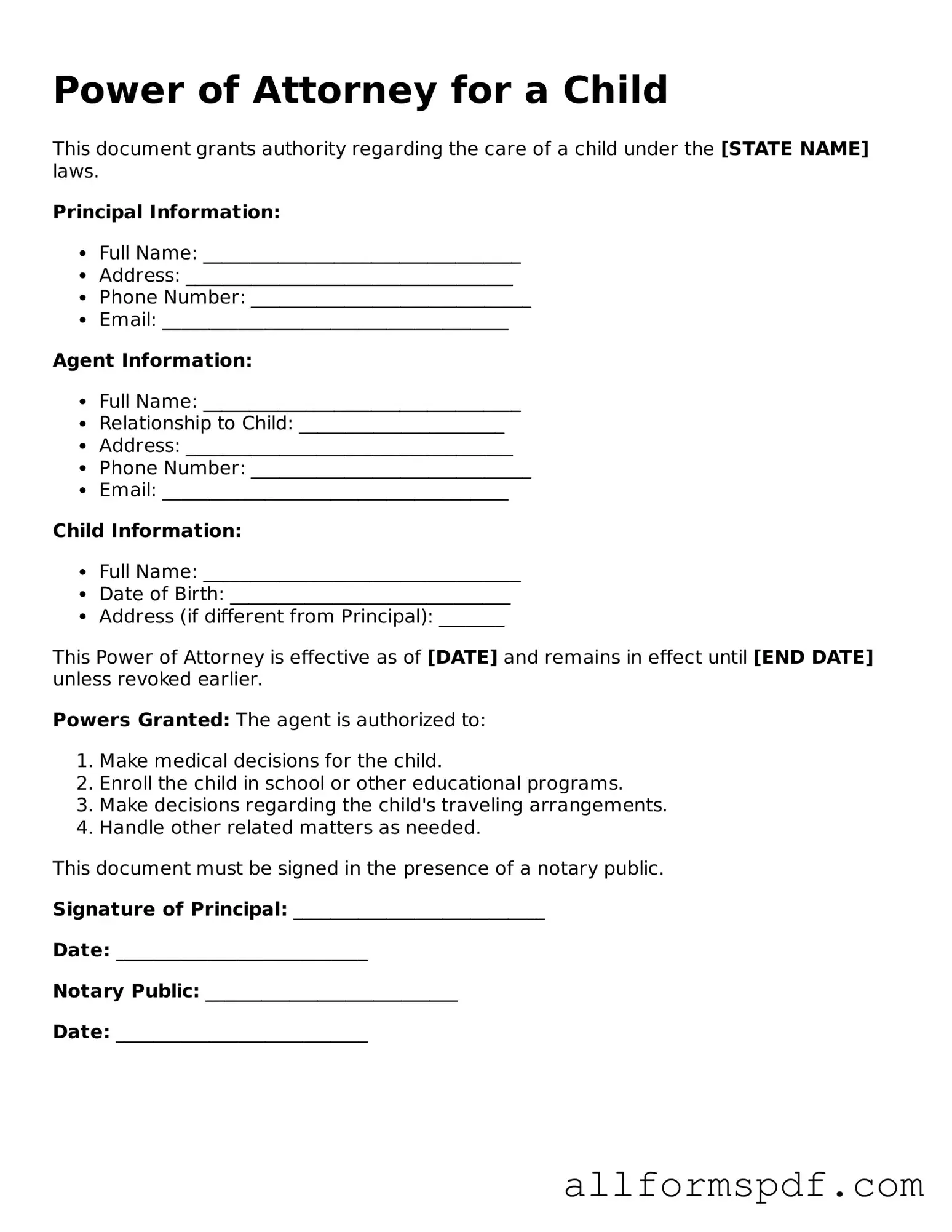When filling out the Power of Attorney for a Child form, many individuals inadvertently make mistakes that can lead to complications down the line. One common error is failing to provide complete information about the child. It is essential to include the child's full name, date of birth, and any other identifying details. Incomplete information can create confusion and may even render the document invalid.
Another frequent mistake involves not specifying the powers granted to the agent. This form allows parents to delegate specific responsibilities, such as making medical decisions or handling educational matters. If the powers are vague or not clearly defined, the agent may not have the authority needed to act effectively on behalf of the child.
Some individuals overlook the importance of signing and dating the form. A Power of Attorney is not legally binding unless it is properly executed. Both the parent and the agent must sign and date the document. Neglecting this step can lead to challenges in the future when the agent attempts to exercise their authority.
In addition, people often forget to have the form notarized. While not all states require notarization, having the document notarized adds an extra layer of validity. It serves as a safeguard against potential disputes regarding the authenticity of the signatures.
Furthermore, individuals sometimes fail to provide a backup agent. Designating an alternate agent ensures that there is someone ready to step in if the primary agent is unavailable or unable to fulfill their duties. This oversight can create gaps in care or decision-making for the child.
Another mistake is not reviewing state-specific requirements. Each state may have different laws governing the Power of Attorney for a Child. Ignoring these regulations can lead to a document that is not recognized or enforceable in your state.
Additionally, people may neglect to communicate with the agent about their responsibilities. It is crucial for the parent and the agent to discuss the scope of authority and expectations. Without this conversation, misunderstandings may arise, leading to potential conflicts when decisions need to be made.
Lastly, many individuals do not keep copies of the executed Power of Attorney. It is vital to retain a copy for personal records and to provide copies to relevant parties, such as schools or medical providers. Without proper documentation, the agent may face challenges in asserting their authority when needed.
